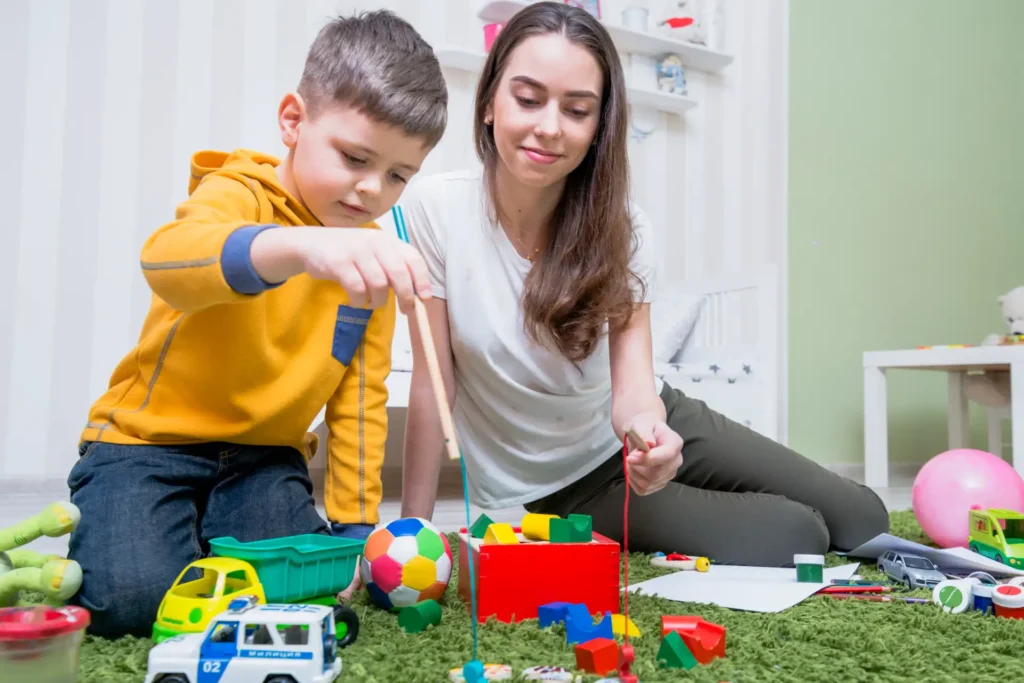By Dr. Bethel U. Nwanebu, MS, PhD
Early childhood is a delicate and formative stage in human development, where the foundations of emotional, cognitive, and social skills are laid. When trauma occurs during this critical period, the effects can be profound and far-reaching. Children exposed to trauma—whether through abuse, neglect, violence, or the loss of a caregiver—are at risk for developmental disruptions that can follow them throughout life. At Hope Bridge Home, we understand these impacts deeply and employ evidence-based interventions to guide children toward healing and resilience.
The Lasting Imprint of Early Trauma
When a child experiences trauma, their brain, body, and emotional world respond in a way that ensures survival but can hinder their development. Trauma can affect children in many ways, including:
1. Neurodevelopmental Delays
Childhood trauma, particularly when sustained over time, can lead to changes in brain development. The brain of a traumatized child is often in a heightened state of “fight or flight,” constantly scanning the environment for danger. This state of chronic stress can interfere with the development of crucial brain structures, such as the prefrontal cortex (responsible for decision-making and impulse control) and the amygdala (the brain’s emotional processing center).
Research Support: A study published by the National Scientific Council on the Developing Child (2012) found that children exposed to toxic stress early in life are at greater risk of developing learning disabilities, emotional regulation difficulties, and behavioral challenges later on.
2. Emotional Dysregulation
Children who experience early trauma often struggle with controlling their emotions. Without healthy models for emotional expression and regulation, they may express anger, fear, or sadness in disproportionate ways. This often manifests as outbursts, withdrawal, or anxiety. Additionally, trauma can lead to deep-seated feelings of shame or guilt, causing the child to internalize blame for their circumstances.
3. Impaired Attachment
Children who are exposed to trauma during infancy and toddlerhood are more likely to develop attachment disorders. When primary caregivers are inconsistent, abusive, or absent, children may struggle to form healthy relationships. The ability to trust others and develop secure attachments is often compromised, making it difficult for them to connect with peers and caregivers in positive, meaningful ways.
4. Academic and Cognitive Difficulties
Trauma can severely impact a child’s ability to focus, learn, and retain information. Children exposed to trauma often experience difficulties with attention and memory, which can lead to academic struggles. They may also face challenges with problem-solving, critical thinking, and executive functioning skills.
Hope Bridge Home’s Approach: Healing Through Evidence-Based Interventions
At Hope Bridge Home, we understand the long-term effects of early childhood trauma, and our team is dedicated to providing evidence-based interventions tailored to each child’s unique needs. Our approach is informed by the latest research in trauma-informed care, ensuring that every aspect of our program supports the healing and growth of the children in our care.
1. Trauma-Informed Care
The foundation of our approach is trauma-informed care (TIC), a framework that acknowledges the widespread impact of trauma and understands the paths to recovery. We create environments that are physically and emotionally safe, foster trust and transparency, and empower children with autonomy and choice.
Core Principles of Trauma-Informed Care at Hope Bridge Home:
Safety: We ensure that children feel physically and emotionally safe at all times, with staff trained to recognize triggers and respond with sensitivity.
Trust: Building trust is essential for traumatized children. Our caregivers, therapists, and counselors work consistently to create reliable and nurturing relationships.
Empowerment: We encourage children to make choices, express their preferences, and participate actively in their own healing journey.
2. Cognitive Behavioral Therapy (CBT)
CBT is one of the most well-established, evidence-based treatments for children experiencing trauma. At Hope Bridge Home, our licensed therapists use CBT to help children recognize negative thought patterns, challenge distorted beliefs, and develop healthier coping mechanisms.
Example: A child may believe that the trauma they experienced was their fault. Through CBT, the therapist helps the child reframe these thoughts, offering alternative perspectives that empower them to release self-blame and regain control over their emotional responses.
3. Play Therapy
For younger children, play therapy is a powerful tool for healing. Children often lack the verbal capacity to articulate their emotions, but play provides a natural way for them to express themselves. By observing and interacting with children during play, our therapists can gain insight into their inner world and help them process difficult emotions.
Research Support: According to the Association for Play Therapy (2020), play therapy has been shown to significantly reduce symptoms of anxiety, depression, and aggression in children who have experienced trauma.
4. Attachment-Based Interventions
Given the critical importance of attachment in early childhood, we employ attachment-based therapies to help children rebuild trust and form secure relationships with caregivers. These interventions focus on creating safe, nurturing environments where children can experience consistent and loving interactions.
Circle of Security, a widely used attachment-based intervention, is one such approach we utilize. This program helps children and their caregivers understand the importance of secure attachment and guides caregivers on how to respond effectively to the emotional needs of the children.
5. Group Therapy
Children often feel isolated in their experiences of trauma. Group therapy allows them to connect with peers who have faced similar challenges. In these sessions, children share their stories, offer support to one another, and learn coping skills in a communal setting. Group therapy helps children realize that they are not alone, fostering a sense of belonging and shared healing.
Steps to Supporting a Traumatized Child: What Caregivers Can Do
Caregivers play a vital role in the recovery of traumatized children. Here are a few practical steps caregivers can take to support their healing:
Provide Consistency and Predictability: Children who have experienced trauma often struggle with unpredictability. Establish clear routines and expectations to create a sense of stability and security.
Practice Patience and Understanding: Healing from trauma is not linear. Children may experience setbacks, and their behavior may be challenging. Caregivers must practice patience, offering empathy and understanding, even when progress seems slow.
Foster Open Communication: Encourage children to talk about their feelings, but do not force them to relive their trauma. Instead, create a safe space where they feel comfortable expressing their thoughts and emotions at their own pace.
Model Healthy Emotional Regulation: Children learn by example. Caregivers should model healthy emotional responses, demonstrating how to handle stress, frustration, and sadness in constructive ways.
Conclusion: Transforming Trauma into Resilience
The effects of early childhood trauma can be profound, but with the right support and interventions, children can overcome these challenges and thrive. At Hope Bridge Home, our evidence-based approach to trauma-informed care helps children develop the resilience, trust, and emotional regulation they need to lead healthy, fulfilling lives. By addressing the root causes of trauma and providing the tools for healing, we empower children to transform their trauma into a source of strength and growth.
References:
National Scientific Council on the Developing Child. (2012). The Impact of Early Adversity on Child Development.
Association for Play Therapy. (2020). Play Therapy and Trauma Recovery.


